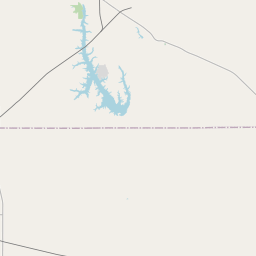Lincoln Travels To The Capital
Historical marker location:
Vandalia, Illinois
Marker installed: 2008







© OpenStreetMap contributors
1834. Looking for Lincoln
Loading...
Searching for other points of interest within 10 miles of this location.The famous Route 66, one of the first highways in the U.S., passed through Illinois. The highway, which stretched from Chicago to Santa Monica, California, was a popular route for tourists and truckers and played an important role in American culture and history.
About Fayette County
Fayette County Timeline
Fayette County, Illinois has a rich and diverse history that stretches back hundreds of years. The area was originally inhabited by various Native American tribes, including the Illini and Shawnee, who lived off the land and made use of the area's natural resources. In the late 17th century, French explorers, such as Jacques Marquette and Louis Jolliet, ventured through the region, but it wasn't until the 19th century that European settlers began to establish permanent settlements.
The county itself was established in 1821 and was named after Gilbert du Motier, Marquis de Lafayette, a French aristocrat and key ally of the American Revolution. Early settlers encountered challenges such as harsh prairie conditions, but over time, farming and agriculture became central to the county's economy. The arrival of the railroad in the mid-19th century further boosted economic growth, and by the late 1800s, Fayette County had become a hub for coal mining and oil production.
The county's history also includes notable events and figures. During the Civil War, many Fayette County residents fought for the Union, reflecting the county's support for the abolition of slavery. In the early 20th century, labor unions played a significant role in shaping industrial relations, with strikes and labor movements gaining momentum.
In recent years, Fayette County has seen changes in its economic landscape, as the decline of coal mining has led to a diversification of industries and a focus on other sectors like healthcare and education. The county continues to embrace its history while adapting to the ever-changing needs and demands of modern times. With its natural beauty, historical landmarks, and vibrant communities, Fayette County remains an important part of Illinois' heritage.
The county itself was established in 1821 and was named after Gilbert du Motier, Marquis de Lafayette, a French aristocrat and key ally of the American Revolution. Early settlers encountered challenges such as harsh prairie conditions, but over time, farming and agriculture became central to the county's economy. The arrival of the railroad in the mid-19th century further boosted economic growth, and by the late 1800s, Fayette County had become a hub for coal mining and oil production.
The county's history also includes notable events and figures. During the Civil War, many Fayette County residents fought for the Union, reflecting the county's support for the abolition of slavery. In the early 20th century, labor unions played a significant role in shaping industrial relations, with strikes and labor movements gaining momentum.
In recent years, Fayette County has seen changes in its economic landscape, as the decline of coal mining has led to a diversification of industries and a focus on other sectors like healthcare and education. The county continues to embrace its history while adapting to the ever-changing needs and demands of modern times. With its natural beauty, historical landmarks, and vibrant communities, Fayette County remains an important part of Illinois' heritage.
Fayette County Timeline
This timeline provides a glimpse into the major events and milestones that have shaped the history of Fayette County, Illinois.
- 1821: Fayette County is established on February 14.
- 1823: Vandalia becomes the county seat.
- 1839: St. Elmo is founded.
- 1864: Ramsey is incorporated as a village.
- 1887: Carmi, later renamed Brownstown, is incorporated.
- 1910: Patoka is officially incorporated.
- 1938: Hurricane Creek Coal Mine disaster occurs, claiming the lives of 43 men.
- 1960s: Interstate 70 is completed, connecting Fayette County to other parts of Illinois.
- 1980s: The oil boom leads to increased economic activity in the county.
- 2000s: Efforts are made to promote tourism and preserve historical sites in Fayette County.